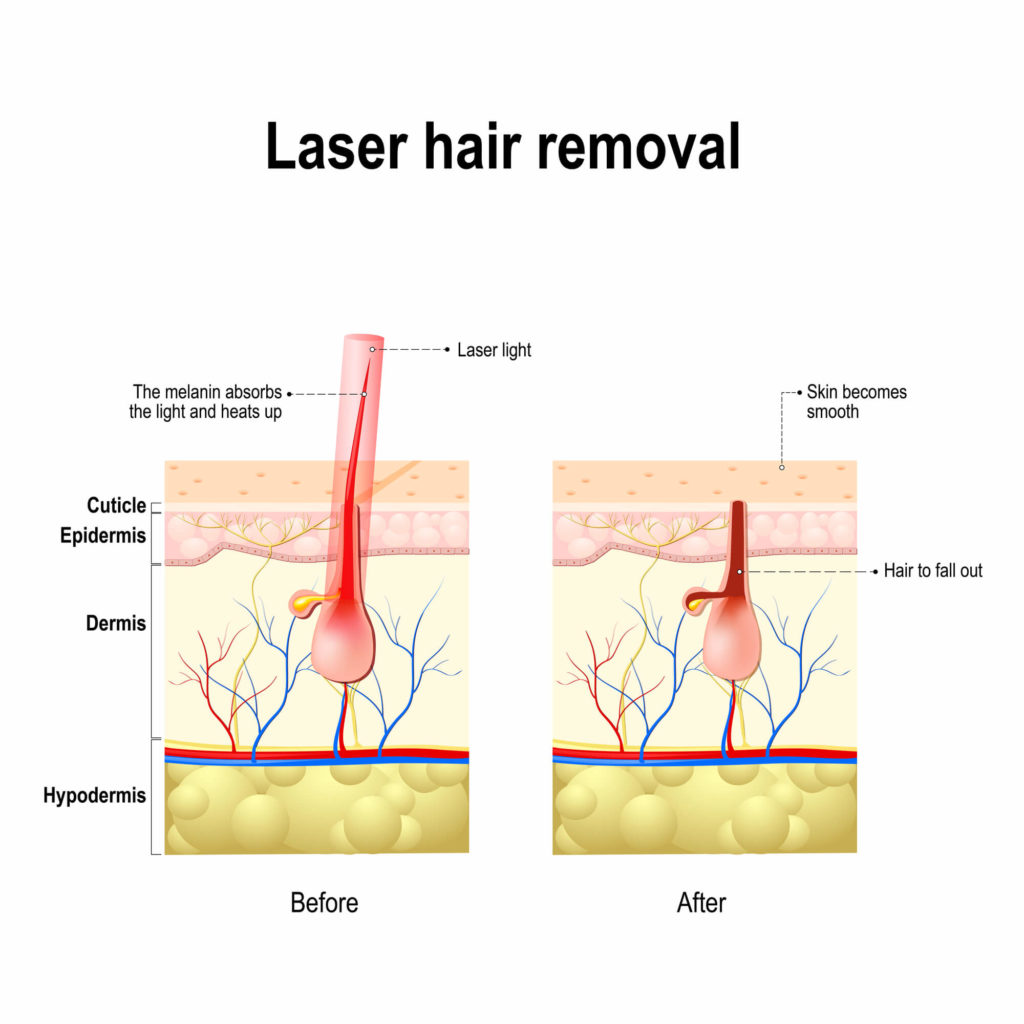What are the Main Differences Between IPL and Laser Hair Removal
As different types of laser hair removal technologies become available to consumers, misconceptions often arise. For instance, IPL (intense pulsed light) is often mistaken as a type of laser, while some people think they can be used interchangeably.

Let’s debunk the myths between these two light-based procedures before you proceed with a laser hair removal consultation in London.
What’s the best hair removal technology?
IPL and laser both use light energy to heat up and destroy their targets (photothermolysis). How does it affect hair growth? The dark pigments of the hair called melanin absorb this light energy, which eventually heats up hair follicles and causes enough damage to slow down or prevent regrowth.

The best laser hair treatment for growth reduction depends on your needs and budget, as well as your skin and hair colour. You need to understand the principles behind these methods so you can make an informed decision on whether to choose IPL or laser for permanent hair removal.
IPL and Laser: Main Differences, Methods, Risks, and Results
Both laser and IPL are light-assisted technologies used to perform various cosmetic and medical treatments. However, IPL is not a laser.
In London, premier laser clinics may use both technologies to satisfy different aesthetic needs. It’s important to know the difference because some clinics would use IPL instead of a laser and advertise it as a laser hair removal treatment.
Understanding laser hair removal
Light is an electromagnetic radiation that we encounter in different ways. The light emitted by fluorescent tubes and other conventional light sources are called ‘incoherent light’ while the light produced by lasers is coherent and monochromatic, which means it has only one wavelength or colour.

The main difference between IPL and lasers is the properties of their light sources. Similar to a light bulb, IPL uses a broad-spectrum, visible light, while laser devices use a single spectrum of concentrated light in one colour and wavelength.
This small difference has a significant impact on hair removal. Lasers can be controlled or focused into a small area without affecting the surrounding skin. Because the light energy doesn’t spread out, it can travel deeper into the follicles.
Advantages
The major benefit of laser hair treatment is it can provide permanent hair removal after only a few sessions. While it creates more heat that directly targets hair follicles, it spares the surrounding skin and tissues. There is less risk for side effects such as burns, blistering, and hyperpigmentation.
Laser hair removal technologies are also safer for those with darker skin tones.
Dark skin colours absorb more heat, so they can benefit more from concentrated and focused light energy than the dispersed light from IPL, which can heat up skin structures around the hair follicles, resulting in increased risk for burns and other adverse reactions.
Disadvantages

The higher price point is the only significant disadvantage of laser hair removal. It can be more expensive than IPL. However, since it is more precise and therefore, more effective, it requires fewer sessions to achieve smooth and hairless skin, which can be cost-effective in the long run.
Understanding intense pulsed light (IPL) hair removal
IPL was traditionally utilised to treat vascular lesions, hyperpigmentations, and other skin conditions. Its hair reduction potential was only realised when treated patients experienced hair loss as a side effect.
In contrast with the concentrated yet powerful wavelength released by lasers, IPL emits light over a wide wavelength range. A single light exposure from IPL activates all major chromophores (pigment) of the skin: melanin, hemoglobin, and water.
If you have light skin and dark hair, your hair contains more melanin and can better absorb the light energy without damaging the skin. However, if you have darker skin, more heat is absorbed by the skin before it penetrates the hair follicles. This can lead to sunburn and long-lasting.
Advantages

IPL hair removal devices can cover large areas because their wide-spectrum light naturally spreads out. It also means they can be used to treat other skin conditions efficiently. It’s treatment time is quicker and generally costs less than a laser procedure.
Disadvantages
The benefit of broad-spectrum light energy can also serve as a disadvantage. IPL is less effective for localised treatment because heat scatters to the surrounding skin before they are absorbed where they are needed.

Individuals with darker skin or olive skin tone may experience more side effects with this hair removal system; although newer technologies are being developed to address such concern.
Moreover, IPL is a less effective technology for removing unwanted hair. It is best to consider this as a hair reduction procedure than a hair removal treatment to prevent unrealistic expectations.
In a nutshell:
An ideal hair removal procedure must be safe and highly effective for all skin types. It should be precise and only targets hair follicles to keep the surrounding skin unharmed. With that being said, laser hair removal is more effective than IPL, but the latter has its own benefits.
IPL releases scattered light energy so it takes less time to treat large areas. However, it requires more sessions for significant hair reduction. And in some cases, it still won’t leave you completely hairless.
Latest News
- August 25, 2021
- August 25, 2021
- July 21, 2021
- July 20, 2021
- June 21, 2021





